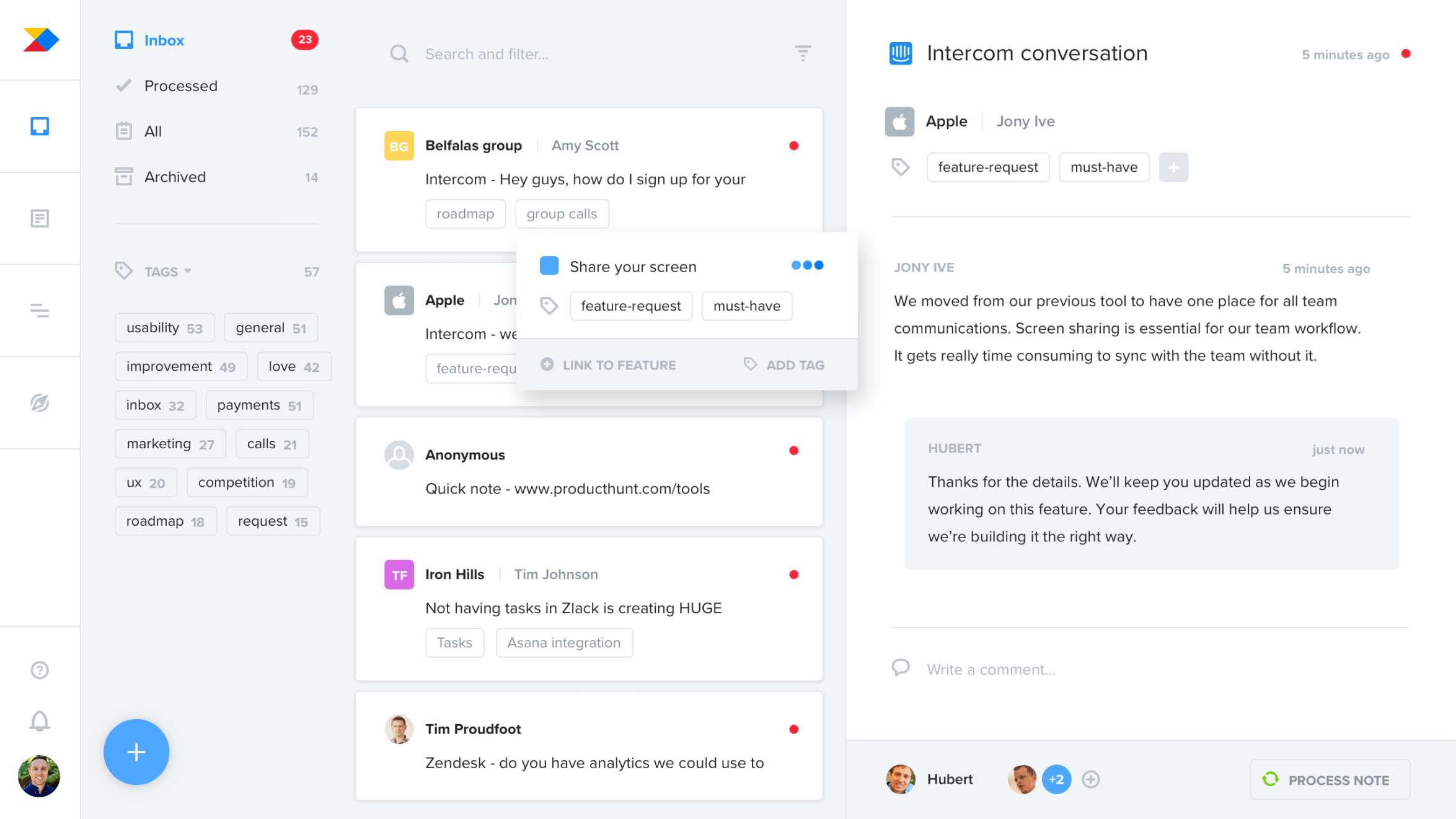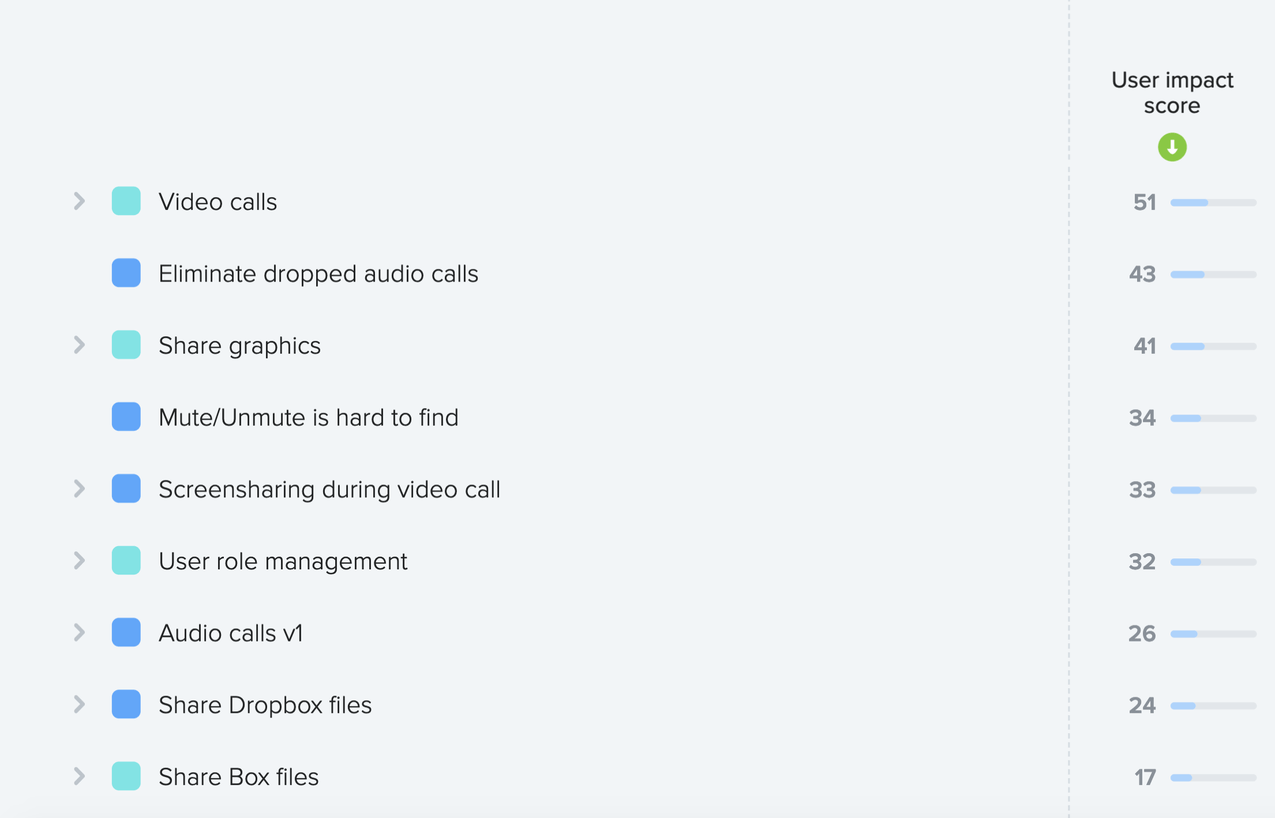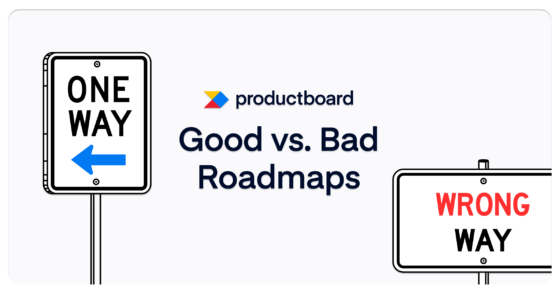Why user insights are a crucial piece of excellent product roadmaps

Product roadmaps driven by user insights
As much as we might like to believe otherwise, product ideas don’t spring fully formed from the minds of individual product managers.
Developing remarkable products and features—products that truly make a difference in each user’s work and life—is a team effort. Everyone across the organization must work together to understand the most significant issues customers face and share a vision for the product.
The job of a true product leader, then, becomes one of translation. It’s the PM’s responsibility to transform product vision into an excellent product roadmap that the development team can then bring to life.
Excellent product roadmaps…
- Are driven by deep user insights gathered from across the organization
- Make a coherent argument for why each feature is prioritized
- Remove emotion from the development process and replace it with data and objective feedback
- Align teams, communicate the outcomes the product team is working towards and how those outcomes support overall business goals
Chaotic product roadmaps affect every part of the organization
The product roadmap is a tool for reducing uncertainty. Stakeholders know when certain milestones will be reached and understand the reasoning behind product prioritization decisions. Development teams stay focused on delivering the highest-value work. Sharing a public roadmap keeps customers informed about upcoming features and product ideas.
At least, that’s how it should work. For many product teams, though, things look a little different.
Key product insights slip through the cracks
Sales, support, and marketing interact with customers and prospects day in and day out. Unfortunately, many organizations don’t have a streamlined way to collect this intel, and a lot of potentially actionable feedback is lost.
Developers lack context behind what they’re building
Traditional product development tools cannot link features and user stories with details of their origin. Without knowing how features being pushed into development solve user problems or contribute to the broader product strategy, engineers will lack valuable context. As a result, organizations miss out on potentially great ideas.
Stakeholders lose confidence in the product direction
Without knowing the why behind product prioritization decisions, stakeholders may lose confidence in the product’s direction. In this unclear landscape, HiPPOs (or the Highest Paid Person’s Opinions) may begin micro-managing the product strategy, or the product team may default to features that help close major deals—whether they support a broader strategy backed up by data and insights or not.
Integrate user insights into the roadmapping process
So what’s the antidote to the chaotic product roadmap? How can product leaders avoid frustrated developers, feedback bottlenecks, and hungry HiPPOs?
The answer, as it turns out, is simple: replace subjective prioritization with real-world data.
So what does this look like in practice?
The most successful product organizations share a few common processes when building their roadmap:
- An organized system for collecting and organizing feedback from customer-facing colleagues and removing bottlenecks around customer feedback;
- A transparent process for surfacing customer insights hidden within that feedback;
- An objective method for using those insights to prioritize tasks on the product roadmap; and
- A closed-loop system for sharing the roadmap with stakeholders and customers and for obtaining further feedback.
Now, instead of using the roadmap to merely share what is being developed and when it will be delivered, the roadmap becomes a tool for building a shared understanding of the why behind each decision.
Let’s take a look at how you can achieve each of these steps within your organization.
1. Feedback collection
Customer-facing colleagues need access to a simple way to log incoming feedback. The right tool can help ensure that every valuable insight lands in a single repository, boosting the volume of feedback you’re able to collect.
Start by creating a shared “inbox” for incoming information. This could be a web-based form that customer-facing colleagues can complete or a purpose-built solution.
Once you’ve set up your feedback collection tool, invite all your customer-facing colleagues to use the system and provide some basic instruction on how to get started. Here’s a helpful article you can send contributors to help them begin submitting insights.
2. Insight generation
Customer feedback comes in all shapes and sizes. The typical feedback “note” reported by a customer-facing colleague could include emails, transcriptions from support calls, support tickets, or even notes scribbled on the back of a napkin during a sales meeting. A lot of information, no doubt—but much of it remains disorganized.
After customer-facing colleagues have delivered their feedback, it’s your responsibility as a product leader to highlight the most important bits—the golden nuggets hiding in the rough. When a common theme becomes obvious, you can push that to your product roadmap as a feature idea, linking each feature back to the feedback where that idea originated.
Tracking insights and linking them to features can be done manually using tools like Evernote or a spreadsheet, but sharing insights is difficult without a purpose-driven tool. Dedicated product management systems often include pre-built tools for consolidating and managing feedback.

3. Objective prioritization
Next, you’ll need an objective way of ranking and prioritizing your feature ideas. One easy way of achieving this is simply by counting how many feedback notes are linked to each feature idea. The more insights linked to a feature—and the more critical those insights—the higher impact that feature should have once released.
Try creating what’s called a user impact score for each feature. The score represents the number of people who’ve requested a feature (or expressed a need that would be solved by it) weighted by how important it is to them. For every piece of user feedback that is linked to a feature, its user impact score increases.
You can then lean on the user impact score as an objective ranking for each feature. Use it to sort and filter features according to how well they address user needs, and surface the ideas that you should tackle first.
Again, you can keep track of this manually in a spreadsheet. But most dedicated product management tools will automatically add points to the user impact score for each new insight you link to a feature idea.

Prioritizing features based on user impact score removes the subjectivity and emotional reactions some stakeholders might have towards your decisions, ensuring everyone shares the same set of priorities.
4. Effective communication
Even after implementing the above processes, most feedback notes don’t provide much detail. When it comes time to build the feature, engineers and designers often need to follow up with customers who left feedback.
Make sure each feature idea you add to the roadmap includes a link back to the original user feedback where that idea originated. That way, developers and designers can easily contact the originating users to ask for more information, run user tests, or update them on the status of the feature.
Closing that feedback loop is the final step that transforms your product roadmap from a static list of features and dates into a living document—a dynamic tool that continuously evolves and changes to best capture the needs of users and supports the overall goals of the business.
One giant leap towards Product Excellence
Product managers might be at the center of the organization, but true Product Excellence takes a village. Product managers, designers, developers, and customer-facing colleagues must all work together to support the product and deliver valuable features to market quickly.
Your roadmap should not be created in a vacuum, nor should it be driven by the priorities of others. Instead, work to open a dialogue between the customer-facing roles in the organization and those responsible for developing products. Making user insights a core part of your product roadmap can help you deliver superior products to market faster and leave your competitors in the dust.
No tool can guarantee success—but failing to adopt the right toolset is a major disadvantage. Productboard gives you the tools you need to gather user feedback, unlock deep insights, and build a coherent product roadmap. Access your free trial of Productboard today and see how top organizations deliver the right products to market faster.




